What is Climate Change
Photo by Steven Gnam
cli·mate change
noun
a change in global or regional climate patterns, in particular, a change apparent from the mid to late 20th century onwards and attributed largely to the increased levels of atmospheric carbon dioxide (CO₂) produced by the use of fossil fuels.
Imagine you’re climbing a mountain. The air is crisp, the views are unmatched, and you’re following a well-worn path.
For the past several thousand years, Earth’s climate has provided a similar steady and predictable path. Recently, however, we veered off course. We started burning fossil fuels on a massive scale in the late 1800s–a disruptive change that has released excessive greenhouse gas into the atmosphere. Now, the conditions on our climb are shifting; a storm is rolling in, and what should be a steady, predictable ascent is turning into an uncertain path ahead.
By continuing to burn fossil fuels at our current rate, we’re not just facing the storm; we’re actively choosing to push ourselves, escalating risk and potentially catastrophic consequences for generations to come.
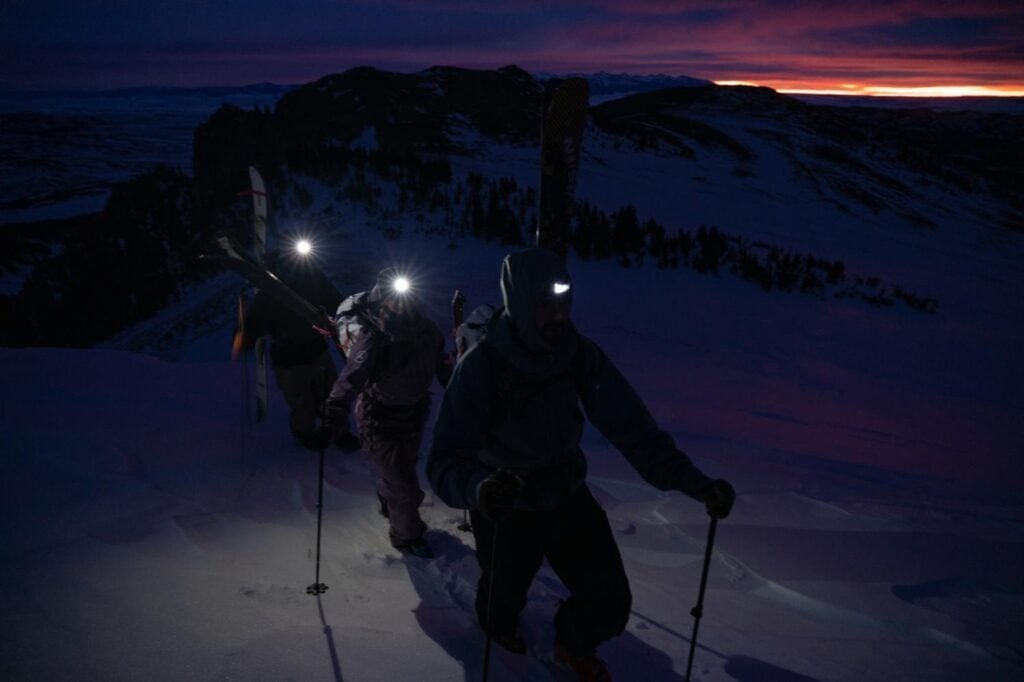
How do we know this warming and environmental change is human-caused? The science is as clear as an alpine morning. Let’s break it down.
CO₂ and the greenhouse effect
Carbon dioxide (CO₂) is a colorless, odorless gas composed of one carbon atom and two oxygen atoms. While it makes up just over 0.04% of the Earth’s atmosphere, it plays a vital role for our planet. CO₂ is naturally produced by oceans, volcanic eruptions, decomposition, and respiration—yes, even humans exhale it (but don’t worry, your deep exhales on the skin track aren’t the problem). These are natural sources of carbon dioxide.
Activities like power generation, transportation, industry, and agriculture produce extra CO₂, known as anthropogenic (human-caused) emissions. Fossil fuels (coal, oil, and natural gas) increased CO₂ concentration in the atmosphere from less than .03% to more than .04%. This might not sound like much, but this excess greenhouse gas traps heat in the atmosphere, disrupting Earth’s climate.
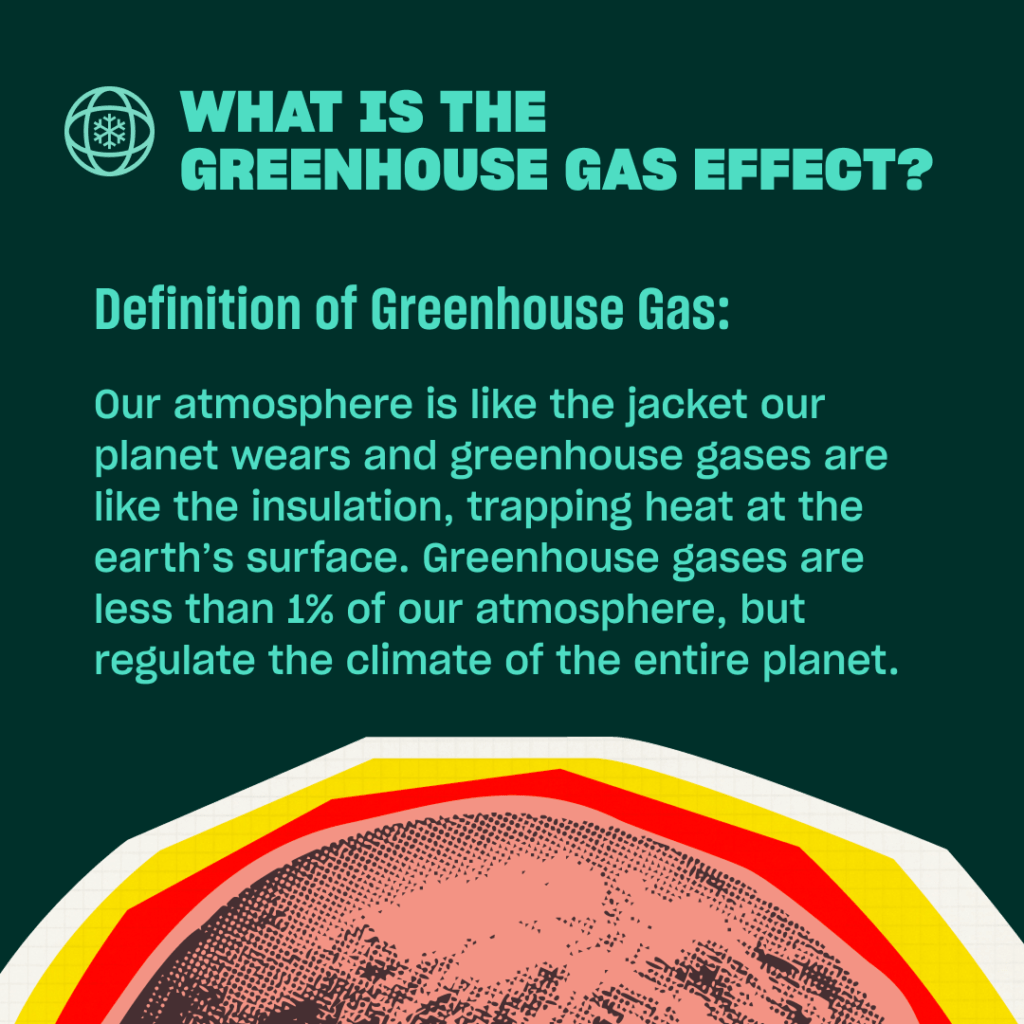
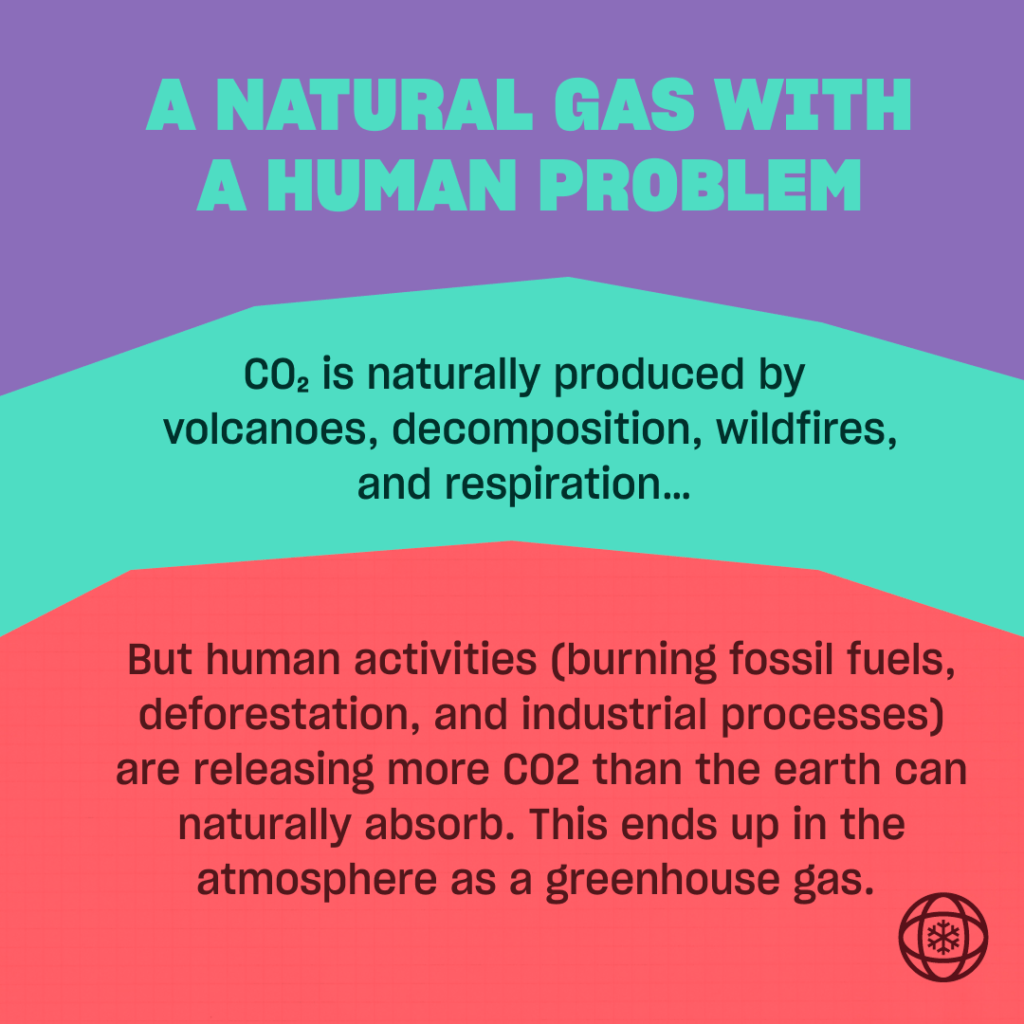
Think of it like a tent on a sunny day. Sunlight gets in, warming everything up. Some of that heat escapes, like opening the tent flap for a breeze. But greenhouse gases (GHGs)—CO₂, methane (CH₄), nitrous oxide (N₂O), and water vapor—act like a dark rain fly, trapping heat inside. This happens because the wavelength of radiation hitting our planet from the sun is much shorter than the radiation cooling the planet back down. The short wavelength radiation (sunlight) gets through the gas, but the long wavelength radiation (surface heat) gets absorbed and reflected back down. This is known as the greenhouse gas effect.
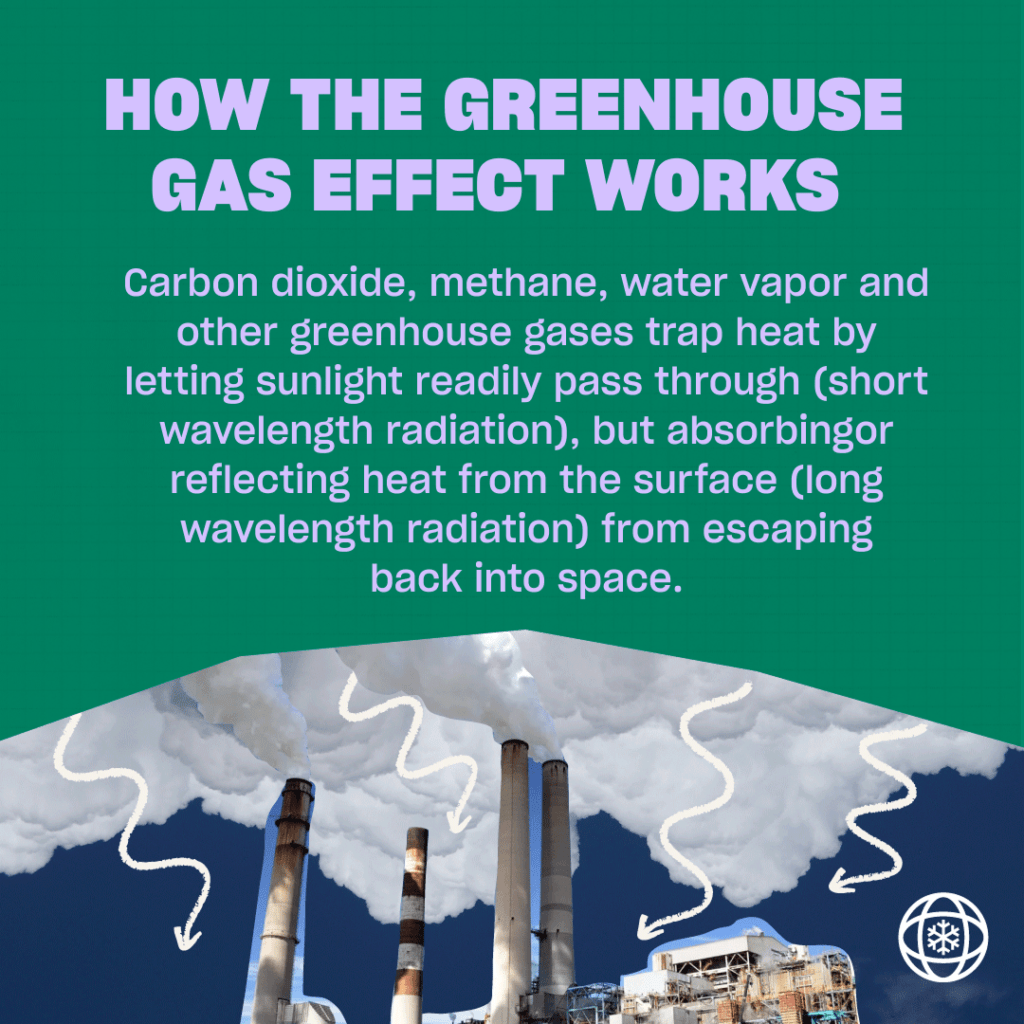
Without the natural greenhouse effect, Earth would be much colder and far less hospitable to life. The problem isn’t that it exists—the problem is that by putting so much greenhouse gas in the atmosphere so quickly, we have broken the thermostat. More trapped heat means more energy in the system for extreme weather, glacial melt that raises sea levels, more drought, more flooding, longer wildfire seasons, and shifting planetary systems that we all depend upon.
Global Warming vs. Climate Change: What’s the Difference?
While often used interchangeably, global warming and climate change aren’t the same thing.
Global warming refers specifically to the rise in Earth’s average temperature.
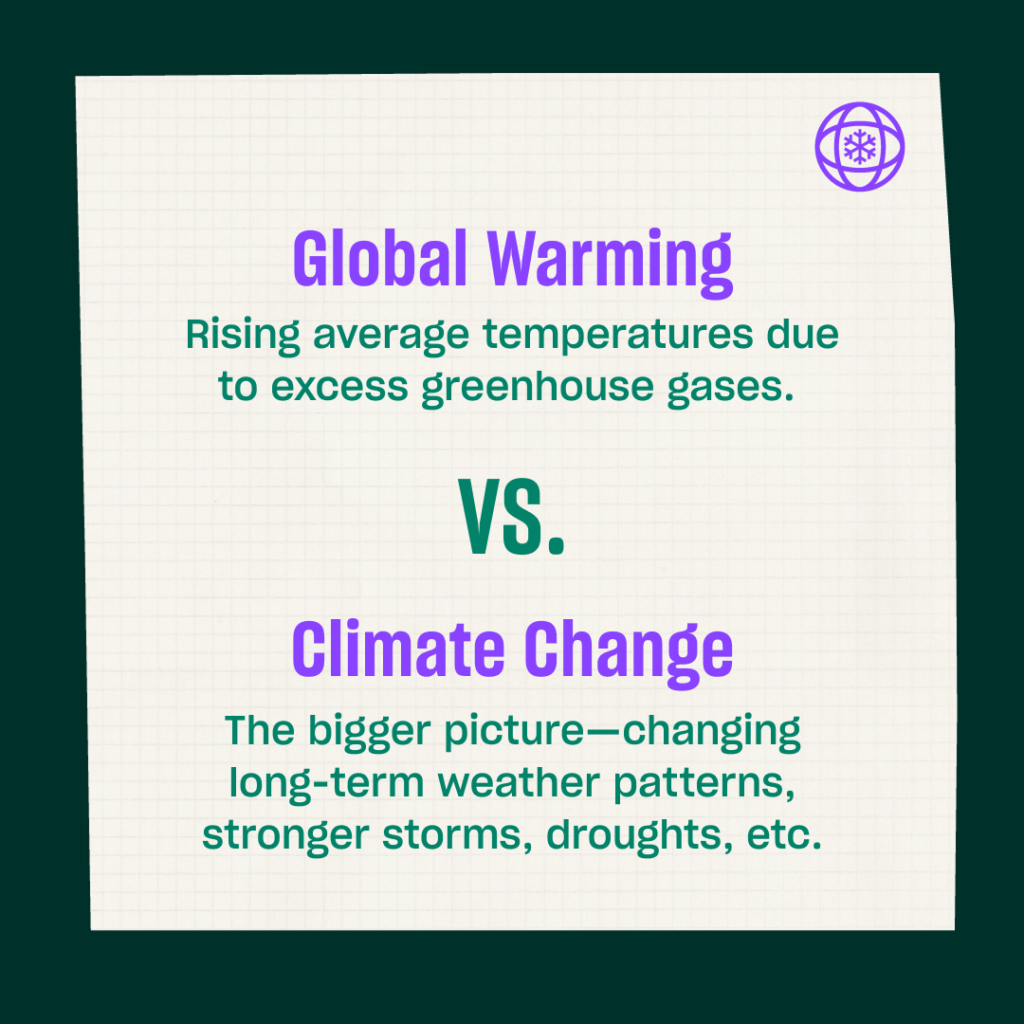
Climate change, on the other hand, is a broader term that includes not just rising temperatures but also shifts in weather patterns, precipitation, wind patterns, and more over long periods. It encompasses the cascading effects of a warming planet—such as stronger storms, prolonged droughts, and shifting seasons.
How do we know it’s human-caused and how is it measured?
97% of climate scientists researching climate change agree that it is happening and that it is human-caused. Data shows that humans have put two trillion tons of carbon dioxide into the atmosphere since the beginning of the Industrial Revolution, and this is changing the planet. There is nearly 50% more carbon in the atmosphere than there was 150 years ago, and humans emit 182 times more CO2 than they did in 1850. Temperatures are rising, sea levels are rising, and extreme weather is becoming more common.
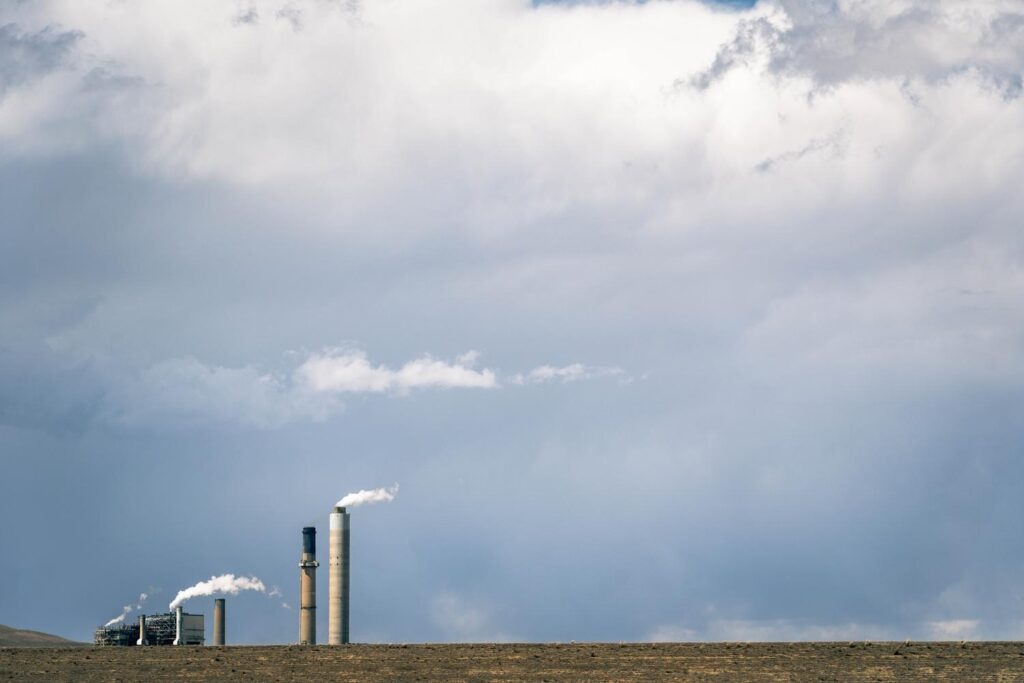
“Since systematic scientific assessments began in the 1970s, the influence of human activity on the warming of the climate system has evolved from theory to established fact.” —Intergovernmental Panel on Climate Change (IPCC)
Scientists track climate change in lots of ways:
- Ice Core Records: Layers of ancient ice in Greenland and Antarctica preserve a record of past atmospheric conditions. The longest ice cores, reaching depths of 3km, reveal that CO₂ levels began rising sharply with industrialization, far exceeding natural fluctuations over the past 800,000 years.
- Weather Data: It’s about 2 degrees F warmer on average than in 1850. Rising temperatures drive extreme weather. For example, the U.S. now experiences three times as many heat waves as in the 1960s.
- PPM (Parts Per Million) Monitoring: Measurements show that CO₂ concentrations in the atmosphere are at their highest level in about 3 million years.
Through these methods, scientists have uncovered multiple lines of evidence showing that the recent rise in global temperatures is due to human activity—primarily from the burning of fossil fuels.
- Carbon Budget Accounting: Scientists track greenhouse gases by analyzing sources (volcanoes, rocks, fossil fuel burning) and sinks (forests, oceans). Annual assessments confirm that fossil fuel combustion and land use changes explain the recent CO₂ increases.
- Chemical Signatures: Fossil fuels have a distinct isotopic fingerprint. As CO₂ levels rise, we detect more of this “fossil fuel flavor” in the atmosphere—proving it’s not from natural sources.
“The carbon in fossil fuels has an isotopic signature. By measuring atmospheric CO₂, we see an increase in the ‘fossil fuel flavor,’ confirming that the rise in CO₂ comes from human activities—not volcanoes or natural sources. Additionally, burning fossil fuels consumes oxygen, and we’ve measured a small but detectable decrease in atmospheric oxygen.” — Dr. Jen Kay, POW Science Alliance Member.
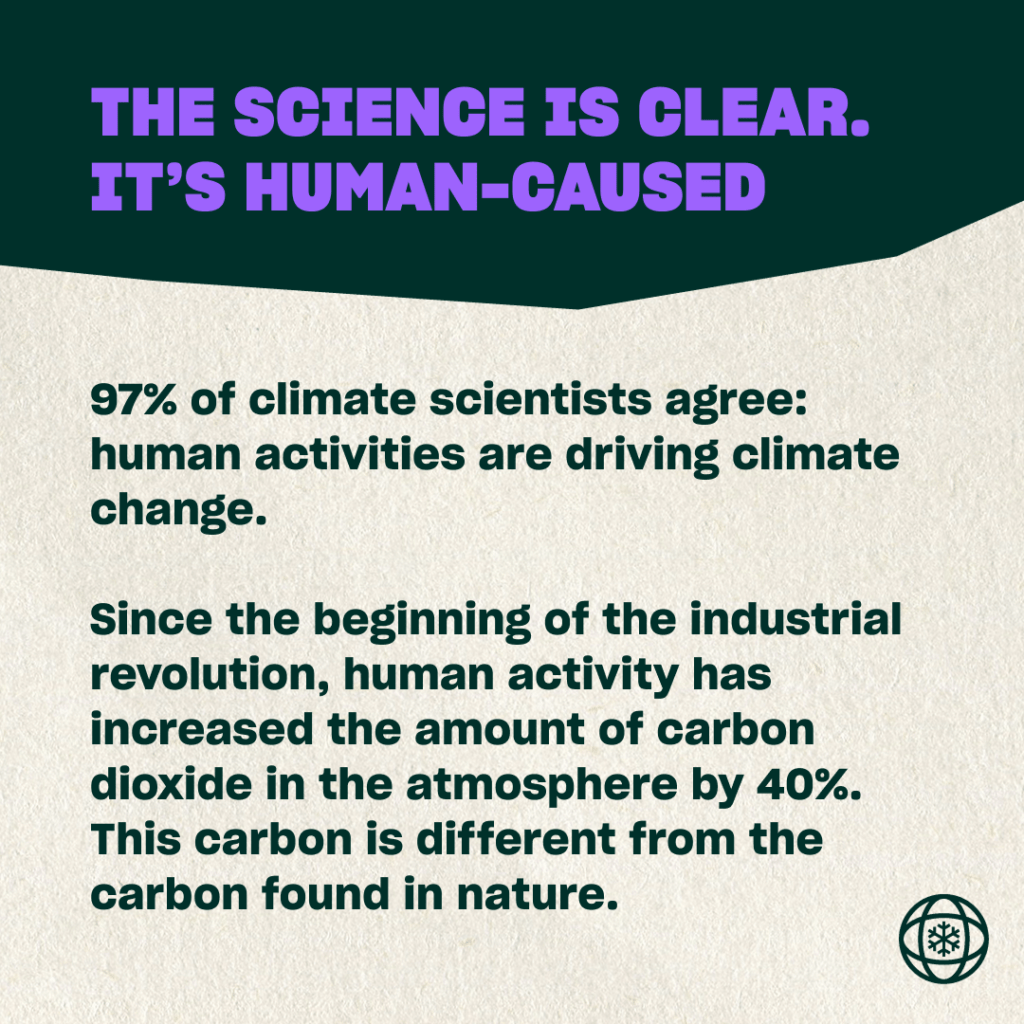
The science is clear: the more fossil fuels we burn, the more greenhouse gas ends up in the atmosphere, the more heat gets trapped, and the more we disrupt our climate. The good news is that we have the knowledge and solutions to reverse the trend. We can burn less and help the planet absorb more.
In the coming weeks, we’re breaking down climate science into bite-sized insights, equipping you with the knowledge to speak confidently—and take action. Plus, we’re bringing you real-world solutions to turn understanding into impact. Ready to get a head start? Dive into our free resources, including the Climate Advocate’s Guidebook and Crux Academy today.
